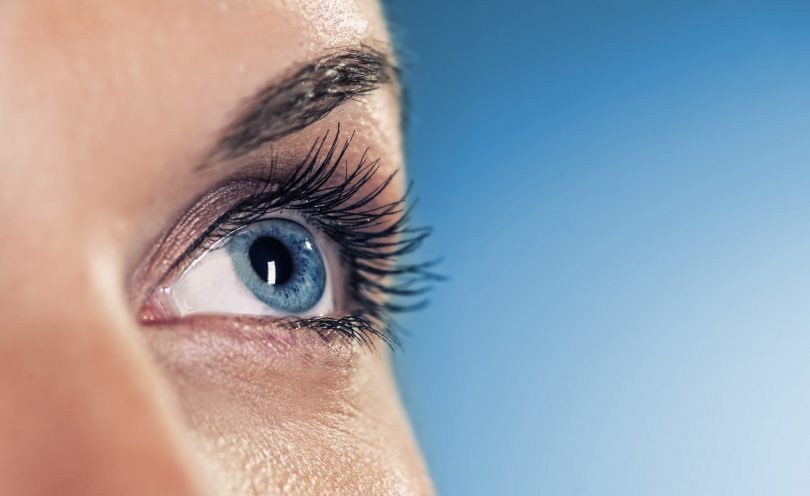Written by Joseph D. Iuorno, M.D.
Understanding The Anatomy Of The Eye And How To Prevent Vision Loss
Diabetes is a medical illness that affects more than 20 million Americans, and more than 40 million are considered “pre-diabetic.” There are three types of diabetic patients: Type 1 diabetics, Type 2 diabetics and those with gestational diabetes.
Type 1 diabetics, or insulin-dependent diabetics, are typically young and have little or no insulin production. Type 2 diabetes is the most common type in the United States, and obesity is a factor. Gestational diabetics have a temporary blood sugar elevation in pregnancy, but otherwise do not have diabetes.
Some systemic signs of diabetes include blurred vision, excessive thirst, fatigue and frequent urination. The tests used to discover diabetes can include fasting blood sugar levels and hemoglobin A1C. Fasting blood sugars above 126 mg/dl at two separate readings are indicative of diabetes. The hemoglobin A1C test is a percentage number that accounts for blood sugar levels during a three-month span. Less than 5.7 percent is considered normal; pre-diabetic is between 5.7 and 6.4 percent; and diabetic is more than 6.5 percent.
When blood sugar levels are chronically elevated, damage occurs at a cellular level in every organ in the body—including the eyes.
Anatomy of the Eye
The optic nerve is the second cranial nerve. As it fans out across the back of your eye, it forms the thin nerve fiber layer called the retina. In front of the retina is the natural crystalline lens, and in front of the lens is the cornea. Light penetrates through the cornea and lens and is picked up by the retina. The retina converts light energy into action potentials and transmits this to the brain via the optic nerve.
The Diabetes Factor
Diabetes is a process in which elevated blood sugars slowly destroy the pericytes on blood vessels. Pericytes are small cells that line the blood vessels and keep them sealed. When pericytes die or malfunction, blood vessels leak, not delivering blood to its intended location and starving the tissue. When blood leaks where it’s not supposed to be, it becomes toxic to the surrounding tissue and causes further damage. The body starts neovascularization, or an attempt to repair the lack of blood flow by creating new blood vessels. But the new blood vessels are unstable and leak even more, and can cause scarring and more damage to the retina.
When tissue is damaged, it malfunctions. In the eye, this commonly causes blurring of vision. When diabetes affects the retina, we call this diabetic retinopathy.
Diabetic retinopathy is the most common cause of blindness in the working-age population of developed nations. Diabetic retinopathy is divided into two main categories: non-proliferative (NPDR) and proliferative (PDR). Non-proliferative diabetic retinopathy can be subdivided into mild, moderate or severe forms. Patients with uncontrolled diabetes will progress from non-proliferative disease to proliferative disease. The proliferative stage of diabetes is the most severe and vision-threatening form of the process.
Studies conducted in the early 1970s revealed that by controlling systemic blood sugar (hemoglobin A1C below seven percent) with insulin, a balanced diet and regular exercise, the progression of nonproliferative retinopathy can be halted or reversed before the onset of proliferative disease.
The second major finding from these studies involves the role of laser photocoagulation for the treatment of PDR. Photocoagulation is a procedure typically performed in an office and uses a laser to destroy peripheral retinal tissue in an effort to save more critical retinal tissue. There is a 50 to 60 percent reduction in severe vision loss in diabetic patients with proliferative retinopathy who had laser treatment. If left untreated, blindness can occur within two years. While laser treatment is effective, the best form of treatment is prevention.
—–
Frequently Asked Questions:
How can I protect my eyes?
Annual eye exams are the best method of detecting diabetic retinopathy. The typical providers who look for diabetic retinopathy are your primary care team and endocrinologist. The best type of ocular exam is a dilated retinal exam; typically, ophthalmologists and optometrists perform the exams and are trained to look for diabetic eye disease.
How often should I see my eye care provider?
Annual eye exams are important to detect retinopathy changes before they affect vision. If there is a diagnosis of retinopathy, the follow-up will be more often for more severe forms of retinopathy. Mild retinopathy will be monitored every 6-12 months, moderate retinopathy every 4-6 months and severe retinopathy every 1-2 months.
Can other parts of the eye be affected?
Yes. The lens can swell when blood sugars are elevated for a prolonged period. Diabetics are more likely to develop clouding of their natural lens, which can cause blurry vision. A cloudy lens is called a cataract, the most common form of blindness worldwide.
Patients with uncontrolled diabetes are also more likely to develop glaucoma, specifically neovascular glaucoma. This occurs when new blood vessel growth scars the fluid drainage system of the eye. This is a severe form of diabetes in the eye and can require laser or further surgery.
Uncontrolled diabetics can have difficulty healing with typical cornea scratches or infections. This is a common problem while blood sugars are high.
Will my insurance pay for diabetic eye screening?
Yes. Most health insurance plans, including Medicare, will pay for annual diabetic eye checkups. Health insurance is different from vision plans. When seeing your eye care provider to monitor diabetes, use your health insurance plan.
FYI: Looking at the retina allows physicians to see living tissue without taking a biopsy. This provides invaluable information about blood pressure control, blood sugar control and other systemic conditions.

